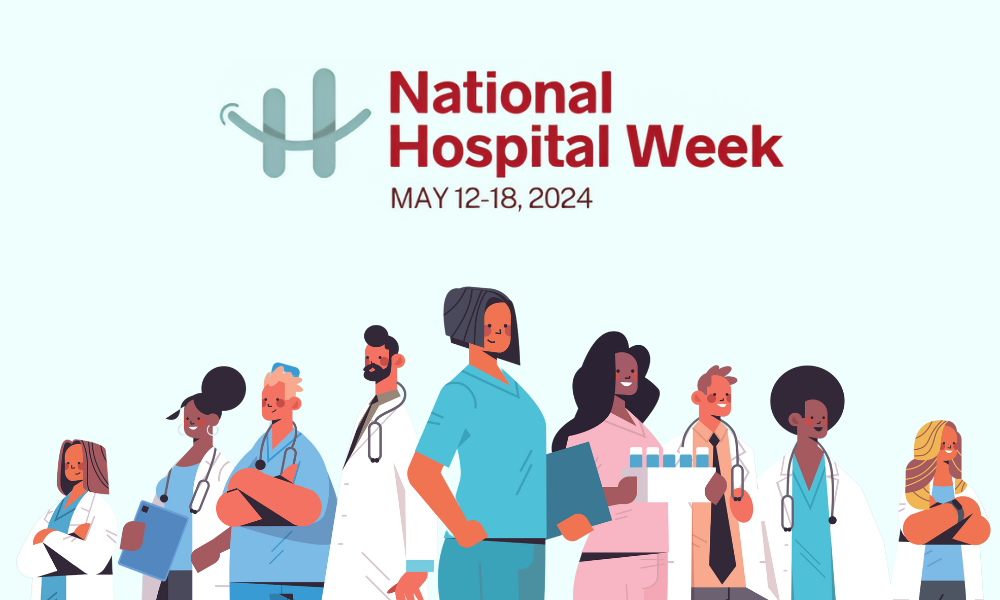This is the third of a six-part series about lessons learned from the COVID-19 pandemic, inspired by a conversation with Interim Physicians Medical Director Ken Teufel, MD.
Lesson #3: We must make healthcare accessible across rural America
In addition to maintaining insurance coverage for telehealth delivery, this means facilitating broadband access for remote/rural locations to allow universal telemedicine access.
Additionally, for the locum tenens industry, it means allowing physicians greater flexibility in working across state lines and streamlining provider credentialing/privileging within healthcare facilities.

A recent Mother Jones headline encapsulates the story: “Rural Hospitals Were Already Hanging On by a Thread–Then Came COVID-19.” It seems the coronavirus pandemic could come dangerously close to “finishing off” what’s left of the rural healthcare network across the country.
“Rural hospitals have been teetering on the tight-wire of financial fragility for about a decade,” said Michael Topchik, director of the Chartis Center for Rural Health (Chartis), in a recent interview with USA Today. “The pandemic could be what sends them over.”
In an editorial published May 19 in the Richmond (NC) Daily Journal, National Rural Health Association (NRHA) CEO Alan Morgan highlighted that “more than 90 percent of the nation’s rural counties have documented cases of COVID-19, with more than 70,000 confirmed cases and 3,000 deaths.”
Hastening Hospital Closures
This comes on the heels of a year (2019) when rural America experienced its highest level of hospital closures in the past decade, at 19, according to a recent article in The Guardian. Writer Oliver Milman quoted a study by Chartis noting the closure of 34 healthcare facilities over the past two years and 120 over the past decade–led by Texas (20), Tennessee (12), Oklahoma (7) and Georgia (7).
At the start of 2020, fewer than 2,000 rural hospitals (1,844) remained open to serve some 62 million rural Americans, according to data from the NRHA and Chartis. Almost a quarter of those (453 facilities) are vulnerable to closure, based on Chartis’ “multilevel logistic regression model.”
“On average, these hospitals have only one-month’s cash on-hand, and 10 have already closed in 2020,” Morgan said in his editorial. (Moreover, the Chartis study indicates hospitals in 14 states are operating at zero to 19 days.)
“Things were bad and they’ve gotten way worse,” Topchik told USA Today. “One in three hospitals were operating in the red. Now it’s almost one in two.”
Topchik explained that elective procedures, which were halted during the pandemic, produce most (79 percent) of rural hospital volume and revenue. Another revenue source, emergency room volume, also has plunged. Topchik said that while rural hospitals are seeing COVID-19 patients, most of them are stabilized and then sent to bigger facilities with more resources–a long-standing practice.
Family Practice Problems
Meanwhile, an earlier USA Today article predicted, based on a report released April 1 by HealthLandscape and American Academy of Family Physicians (AAFP): “By June (2020), an estimated 60,000 family practices will close or significantly scale back, and 800,000 of their employees will be laid off, furloughed or have their hours reduced as they see a decline in business during the coronavirus pandemic.”
By the end of that month, Shawn Martin, AAFP senior vice president of advocacy, practice advancement and policy, posted on his “In the Trenches” blog that, “The rural health care system would not exist without family physicians. I am not being flippant or disrespectful, but family physicians are the foundation of the rural health care system. You do not see many internists, pediatricians or obstetricians in these communities–you see family physicians.”
Highlighting the study featured in USA Today, Martin described, “the devastating impacts over a three-month period on access to care and the economic viability of communities, especially rural communities, should family physician practices close.”
Projected Family Physician Shortage
Physicians in family and internal medicine comprise roughly 26 percent of all physicians active in patient care across the United States, according to the 2018 Physician Specialty Data Report, the latest shared online by the Association of American Medical Colleges (AAMC).
Largely because of the rapidly-aging US population, AAMC predicts a shortage of between 47,000 and 122,000 physicians by 2032. This includes a primary care deficit of between 21,000 and 55,000 physicians.
Regarding our aging population, AAMC highlights US Census data projecting 10-percent population growth by 2032, with the number of people over age 65 increasing by 48 percent. In addition, a third of all currently active doctors will be older than age 65 in the next decade, so their retirement schedules could dramatically affect physician supply.
Locum Tenens Leverage
According to StaffCare’s “2020 Survey of Temporary Physician Staffing Trends,” primary care physicians (“PCPs,” or family or internal medicine doctors) remained the most in-demand locum tenens physicians for healthcare facilities in 2019, when 30 percent of responding healthcare facility managers reported using them at some time during the previous 12 months. Furthermore, the number of responding healthcare facilities seeking locum tenens physicians from all specialties (53 percent) more than doubled since 2016.
Considering the plight of rural hospitals, and that of many family practices following the COVID-19 shutdown, demand for locum tenens providers could increase rather dramatically by 2024. Perhaps the proverbial “perfect storm” for aligning rural healthcare demand with locum tenens supply could be brewing.
what we’ve established so far:
- The COVID-19 pandemic threatens to break our struggling rural healthcare system.
- We’ve lost 120 rural hospitals over the past decade–more than a fourth (34) of those in the past two years.
- Almost a quarter of the remaining 1,844 rural hospitals across the country were vulnerable to closure before COVID-19 hit rural America.
- This summer we could see the closure or downsizing of some 60,000 family medical practices, affecting the livelihoods of as many as 800,000 healthcare workers.
- AAMC projects a primary care physician shortage as large as 55,000 PCPs over the next 12 years.
What’s Being Done?
As Adrianna Rodriguez of USA Today observed, “Rural hospitals have long relied on bipartisan (congressional) support. The Rural Emergency Acute Care Hospital (REACH) Act and, more recently, the CARES Act, provided some relief to small health care providers. Additionally, the federal government decided (last) month to send $22 billion to rural hospitals and those hardest hit by COVID-19.
” ‘Every available dollar possible should go to rural hospitals as it will be a much larger dollar in three to six months,’ said Jimmy Lewis, CEO of HomeTown Health, which represents rural hospitals in Georgia.”
Increased federal funding, carefully apportioned, should help in the near term. As we’ve discussed in previous posts, so should maintaining the licensing, credentialing and delivery-method flexibility afforded by state and federal regulatory authorities to assist in fighting COVID-19 after the crisis subsides. This includes continuing to reimburse providers for telemedicine, which has established a firm footing among both providers and patients over the past several months.
However, this alone doesn’t solve the problem for rural Americans.
Digital Disparities
“While telemedicine offers rural Americans better access to health care, millions of them lack the minimum broadband speeds needed by most telemedicine services,” Dr. Ken recently observed. “Lack of widespread access to high-speed internet is an often overlooked barrier to telemedicine’s growth potential.”
The Primary Care Collaborative’s survey results recently highlighted in Medical Economics back Dr. Ken up: Sixty-five percent of responding physicians said they had patients who can’t use (telemedicine) services due to a lack of computers or internet. In fact, “44 percent are conducting the majority of their telehealth visits by telephone, according to the survey.”
Writing for “The Markup” (“a nonprofit newsroom that investigates how powerful institutions are using technology to change our society”), Emmanuel Martinez noted, “There are more than 14 million people without any internet access and 25 million without the faster and more reliable broadband access, according to a 2018 Federal Communications Commission study.”
The “Map to Prosperity” report released in October 2018 by the Center for Rural Affairs indicates, “In total, 19 million of 25 million households without broadband access live in rural areas. Though no more than 10 percent of urban households lack broadband access in any individual state, this number is much higher in rural communities. More than 60 percent of rural areas lack broadband access in Wyoming, Oklahoma, New Mexico, Nevada, Montana, Missouri, Mississippi, California, Arizona, and Alaska.”
According to a report entitled, “Understanding the True State of Connectivity in America,” delivered March 1, 2020, to the National Association of Counties (NACo) and several other funding organizations, more than half of US counties, on average, experience Internet speeds below 25 megabytes per second, the federal definition of minimum broadband standards.
Furthermore, NTCA–the Rural Broadband Association notes that, “Collectively, America’s small, independent broadband providers [essentially rural telephone companies that have evolved into telecommunications companies] serve rural customers in 45 states covering nearly 37% of the nation’s land mass, but less than five percent of its telecom subscribers. On average, NTCA member companies’ customer density is approximately seven subscribers per square mile. By contrast, larger telecommunications companies, on average, serve 130 customers per square mile.”
Not surprisingly, it’s challenging for many of these small businesses to maintain connectivity for remote and rural communities. At the same time, COVID-19 has shown us how critical reliable internet access is to life in the 21st Century. As NACo notes, “Without access to affordable high-speed internet, workers in underserved economies are being left behind as employment opportunities are given only to those with access to information, education and training.”
In an op-ed published May 27, 2020, in the Washington Examiner, Senators Kevin Cramer (R-ND); Joni Ernst (R-IA) and David Perdue (R-GA) highlighted the noticeable increase in internet activity across the country during the nationwide coronavirus shutdown over the past few months.
At the same time, the senators pointed to the additional strain this has caused NTCA-member internet providers, more than 54 percent of which, in 38 states, have experienced increases in uncollectible payments of up to 20 percent during the shutdown. Since many of these companies have taken the FCC’s “Keep Americans Connected Pledge,” they agreed:
- Not terminate service to any residential or small business customers because of their inability to pay their bills during this pandemic
- To waive any late fees that any residential or small business customers incur because of their economic circumstances
- To open their Wi-Fi “hot spots” to anyone who needs them
The three senators are co-sponsoring the Keeping Critical Connections Act, introduced by Sen. Amy Klobuchar (D-MN), which would use “unobligated funds to incentivize small broadband providers to deliver free or discounted broadband services or upgrades for low-income families struggling to pay their bills or who have a student in the household in need of distance-learning capability during COVID-19.
“We cannot allow the COVID-19 pandemic to increase the digital divide that continues to plague our nation. Whether it’s to help our schools, businesses, and healthcare providers operate remotely…reliable broadband connectivity is as important as ever. This bipartisan effort will help keep our citizens connected while making sure our smaller providers are made whole as we make it through these challenging days.”








